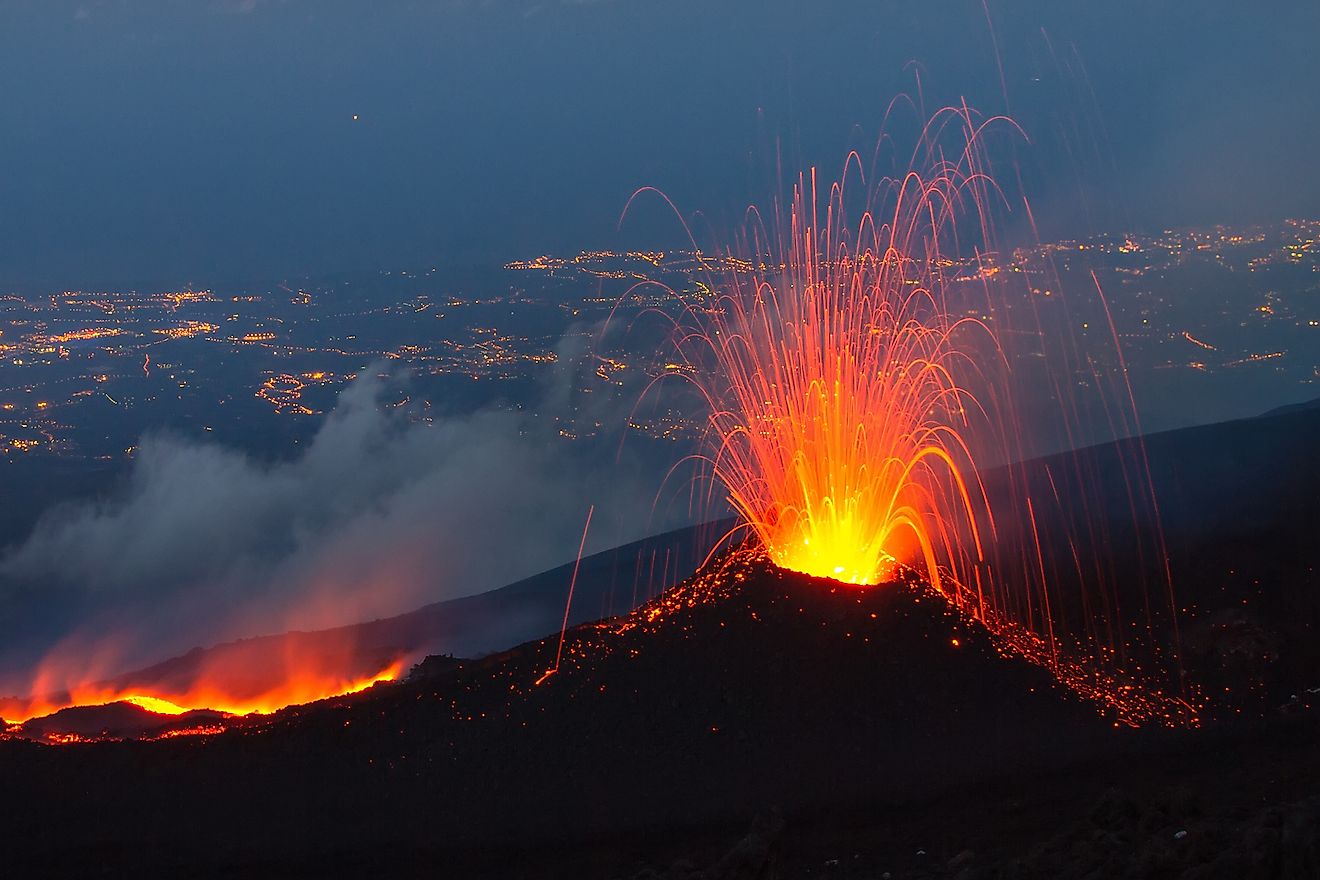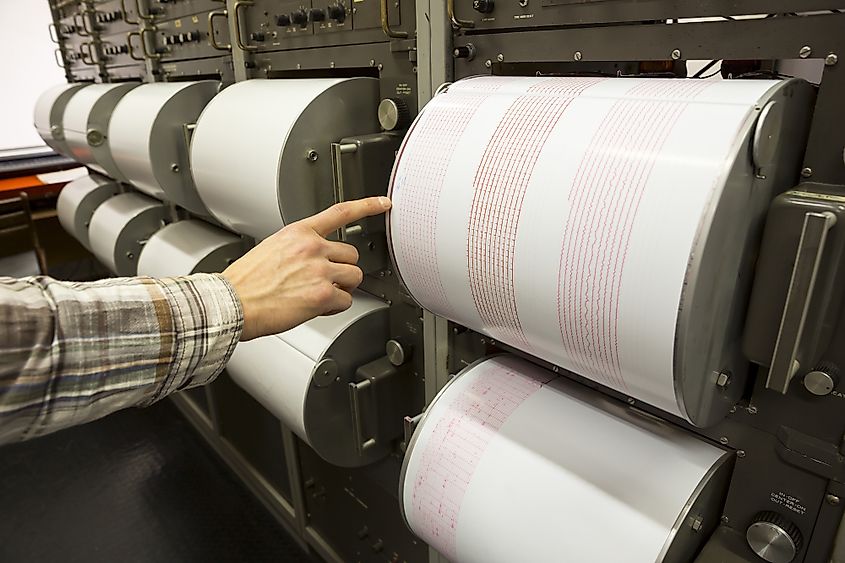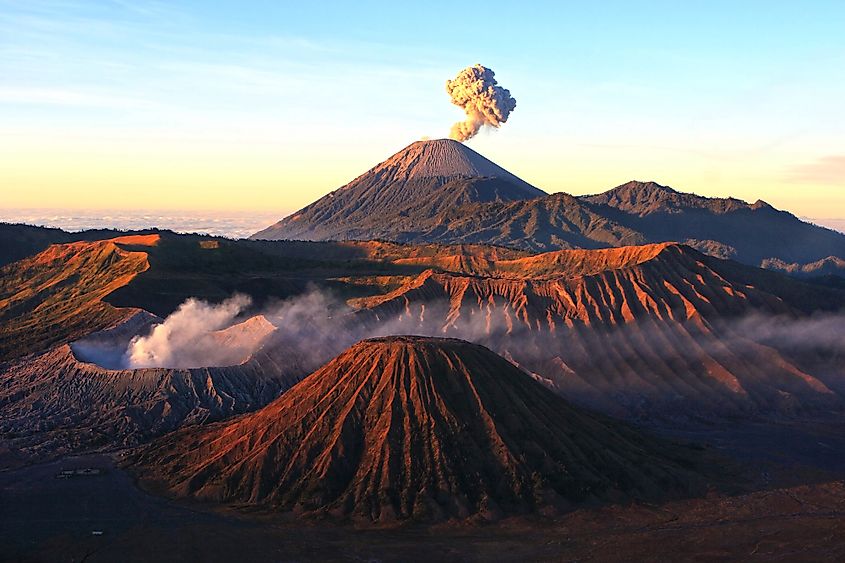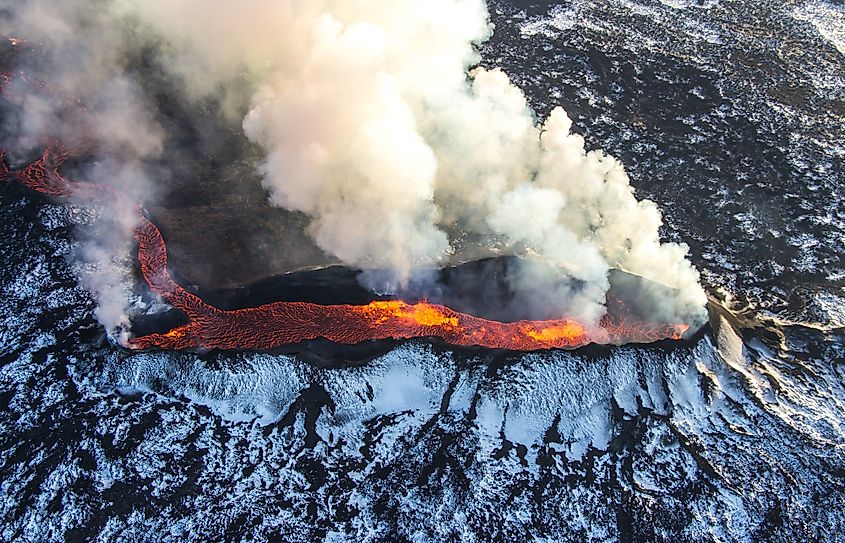Can Volcanic Eruptions Be Predicted?

- Volcanoes can form when two tectonic plates in Earth's crust collide.
- Volcanoes can spew hot gases, rock, ash and lava.
- Volcanologists measure earthquake beneath volcanoes to predict future eruptions.
Volcanoes are amazing feats of nature. These eruptive mountains can spew ash, rocks, lava, and hot dangerous gases that can be beautiful from afar, but potentially deadly up close.
According to the CDC, the way most people die from a volcanic eruption is through suffocation, when their air no longer has enough oxygen in it, and is full of ash or gases.
Because volcanoes can be so dangerous, it is important that scientists are able to accurately predict when one will erupt. This way, people in the vicinity of the mountain can receive enough warning to get out.
Thankfully, while predictions are not foolproof, volcanologists now have a variety of tools at their disposal that can help them foresee an eruption before it happens.
Here is how they do it.
Volcano Seismology

One way scientists can anticipate that a volcano will blow its top is by using seismology. People who study seismology examine earthquakes and how waves of energy move through the Earth’s layers.
If you study volcanic seismology, you analyze the frequency and strength of earthquakes underlying a volcano. According to PBS.org, volcanologists say this is some of the most important knowledge they can use when trying to predict future eruptions.
Remember, volcanoes form when two tectonic plates collide on Earth’s crust. This is an earthquake. When this happens, magma from the Earth’s upper mantle can ooze its way to the surface, forming the volcano’s first eruption. Earthquakes are integral to making volcanoes.
Because of this, volcanologists use seismographs, which are machines that measure earthquakes, to transmit data from a volcano 24 hours a day. Scientists have this information sent to a monitoring station that sits in a building safely away from the volcano.
There, researchers can measure the size and epicenter of the earthquakes taking place, as well as how the tremors causing them are escalating. Do the tremors start small and grow bigger over several minutes, or do they blast strongly in just a few seconds?
By analyzing the seismic activity beneath a volcano over time, scientists can see patterns in the Earth’s activity. This can help predict future eruptions.
Ground Formation

The way that a volcano is formed in the ground can also help to predict when it will next blast.
The ground around an active volcano is always shifting. When magma rises, it pushes the surface of the volcano up. The surface bubbles up like a balloon. Scientists can use three-dimensional ground mapping with something called tiltmeters and other surveying tools to measure even tiny changes in the ground’s movement. Doing this over time can show even more patterns in a volcano’s activity, and help predict eruptions.
Vapors

Finally, in addition to using seismology and monitoring the ground around a volcano for changes, scientists can study the skies for clues to an up-and-coming eruption. By using information gathered by the Earth Observing System that first launched in 1999, volcanologists can examine gas concentrations in the atmosphere above a volcano. This can help them learn about previous eruptions.
Scientists can also look at the concentrations of carbon dioxide and sulfur dioxide in the air to foresee when a volcano will next blow. Is the volcano suddenly emitting more acidic gases? If so, it could be an indication of dangerous activity.
In the past, this method required volcanologists to place monitoring beakers filled with potassium hydroxide near the base of volcanoes manually, to see how the contents changed in composition. This is dangerous work. Scientists are now hoping to use an electronic box that will transmit data about the air around a volcano to a monitoring station, much like the seismographs and tiltmeters do. They are also said to be using infrared telescopes to do the same thing.
Can volcanologists predict exactly when a volcano will erupt? Yes, they often can, but what is still difficult to do, researchers say, is to predict how big the blast will be. It could be an eruption the size of Mt. Pinatubo’s in 1991, or it may be just a trickle of lava or ash that leaves no crisis in its wake. By watching and studying, hopefully volcanologists will be able to predict even the size of a volcano’s blast, in the future. For now, the methods listed above help to keep those who live with these beastly but fascinating mountains, safe.











